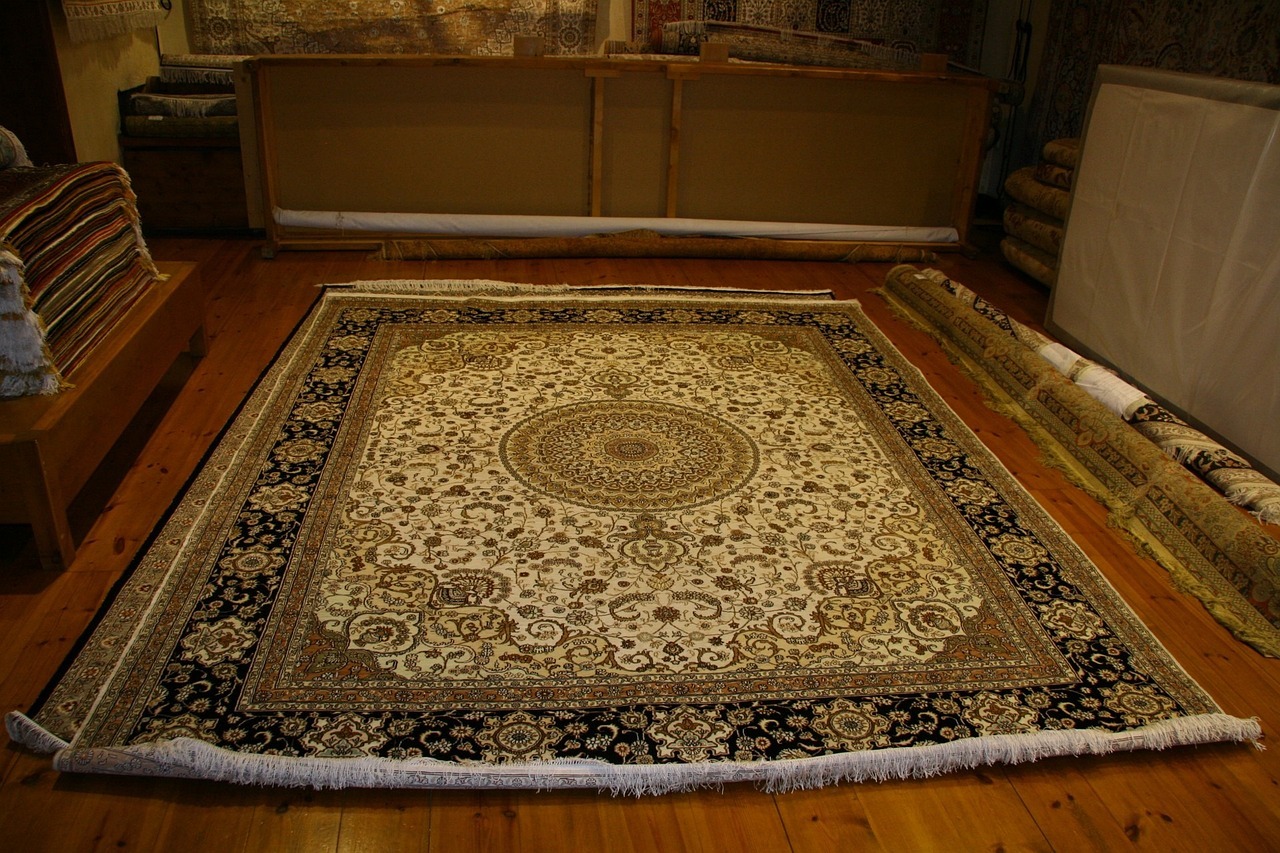Rugs, just like carpets, can also beautify our home, office, or any other space they may be placed in. And they are also used whether for functionality or aesthetic. Aside from completing the look of a room, rugs also shape the way you feel in it. And more than being a decoration piece in your home or space, a rug is also a piece of art that you step on and sometimes sleep on as well.
There are a lot of different kinds of rugs available today. They come in different designs, shapes, colors, and materials. But have you ever wondered how these rugs differ from one another? Well today, we are going to give you information on the different types of rugs. This way, you will be able to know what each type is made of and which is the best one that will work for your home, room, or space. Check out black rugs for more information.
The Two Types of Rug Production Method
In the present time, rugs are usually produced using large machines. But long before machine production was invented, there are already rugs being produced by craftsmen and women by using different intricate techniques. Until today, these methods of production are still being used by rug makers.
-
Hand-Woven
Many years ago, different cultures from around the world have created their own rugs by hand and this tradition is still practiced today. In fact, the hand-woven rugs we have today are created by skilled craftsman and they are truly a work of art. And with that, hand-woven rugs are typically the most expensive style of rug.
-
Machine Woven
Machine production has become the most popular style of manufacturing rugs in modern times. Factories use commercial weaving machines and power looms to create rugs and they can mimic different styles of hand-woven rugs. This type of rug production method also produces the most prevalent and affordable styles of rugs.
Different Construction Styles of Rugs
Here are the different construction styles of rugs:
- Tufted: Tufted rugs have fibers that are looped through a rug’s backing. These fibers are either left looped like in a shag rug or evenly cut across. Tufted rugs are not very durable and they cost less compared to woven rugs. It can typically last for 5 to 7 years.
- Knotted: Knotted rugs are usually associated with Persian rugs. They are created by knotting the fiber of the rug together. A machine or a rug maker creates each knot and then each of these knots is cut. When a knotted rug is handmade, it can take over an entire year for a single person to finish making it.
- Flat Woven: This type of construction style is similar to knotted rugs but instead of cutting each knot after it’s created, it continues with the initial thread to create more knots without cutting them. Flat woven rugs are faster to produce compared to knotted rugs. It is a popular construction style and is often used in the kilim rugs of the Middle East, Asia, Turkey, and Africa. It is also a popular construction style in making dhurrie rugs that are popular in India.
- Hooked: The backing of hooked rugs features checkerboard-like patterns. It is created by hooking fibers through the holes in the backing.
- Braided: Braided rugs are a classically American style of rugs. They are made by braiding long sections of cloth and sewing them together. These rugs are usually round or oval in shape.
- Shag Style: These rugs have long, thick shag that offers the ultimate in softness underfoot. Shag rugs are dense and they are great for softening the tone and walking space of any living room.
Different Types of Rugs
As mentioned earlier, rugs are available in a variety of types. It depends on the type of application you need a rug for. Here are the different types of rugs available in the market.
-
Area Rugs
These are one of the most popular rugs and they are used everywhere and in any décor setting. Area rugs are the most versatile and you can find one in seemingly every possible pattern, style, size, and shape.
-
Hallway Runners
This type of rug is designed to fit the space located in a hallway. Hallway runners are available in different lengths, depending on how long your hallway is and they feature a very narrow width.
-
Doormats
There are many styles of doormats available and they are usually placed at the front and rear doors. They are used to clean feet or shoes before entering the house or any space.
-
Outdoor Rugs
These type of rugs are designed to be heavy-duty and weather-resistant. Outdoor rugs are usually placed on decks and patios as a decorative piece.
-
Kids’ Rugs
These are the types of rugs placed in children’s rooms or play area. Most of these rugs feature kid-centric colors, designs, and patterns. There are also some kids’ rugs that are interactive and encourages children to incorporate them into their play.
-
Bath Rugs
These rugs are usually placed in front of the tub or shower. Bath rugs provide sturdy footing and as well as an absorbent surface that you can step on after a shower.
-
Stair Runners
These rugs are similar to hallway runners but they are longer and narrower. Stair runners are designed to provide sure footing when you walk up and down the stairs.
-
Kitchen Rugs
Kitchen rugs are a popular décor item and they are functional too. They can be found in many kitchens around the world.
Different Materials Used in Making Rugs
Aside from having different styles, types, and production method, rugs also differ in materials. And the materials in which they are crafted from can have a dramatic effect on the look, feel, quality, and durability of a rug. Here are the different materials used in making rugs.
-
Wool
This is one of the best and most popular materials used to create a rug. It is a natural fiber that is derived from sheep. Wool is soft and durable, and it feels cozy and luxurious. It is also very easy to clean and can resist staining. It is also a strong choice in high traffic areas like in the living room or dining room. However, it does not work well in damp areas or in spots with very high humidity. They can also fade in time.
-
Cotton
This material is usually used in creating flat-weave rugs and world styles such as dhurries and kilims. It is much cheaper than wool, however, it is also not very durable and not soft enough. It is a great option if you plan to put rugs in casual areas and kitchens.
-
Silk
This is another luxurious and beautiful material for rugs. However, even when they are the most beautiful, they are not the most durable. You can achieve an extremely fine level of detail when you choose silk for your rug material. It’s best to place them in low traffic areas like the bedroom.
- Leather and Animal Skin
There are also rugs that are made of leather and animal skin. They are beautiful, durable, and very inviting. These are unique rugs and a great way to make a statement with your space. However, like wool, they are not great for areas that are damp or humid.
-
Synthetics
Rugs made of synthetic fibers are designed to mimic the look and feel of rugs that are made of cotton, wool, and silk. They are prized for being highly affordable while looking very luxurious and expensive. They are also very durable and can be used in high traffic settings and even outdoors. It is also the easiest material to clean. Some of the synthetic fabrics are nylon, polyester, and polypropylene.
-
Acrylic
An acrylic rug material is plastic based and is usually used in making modern carpets and rugs. The fibers of this material are stain resistant, strong, and can be dyed and patterned as well.
There are indeed many different types of rugs out there but all of them can certainly add style and aesthetic to any space. We hope the information we shared helped you to further understand the different types of rugs for you to choose which of them will best suit your home or space.



